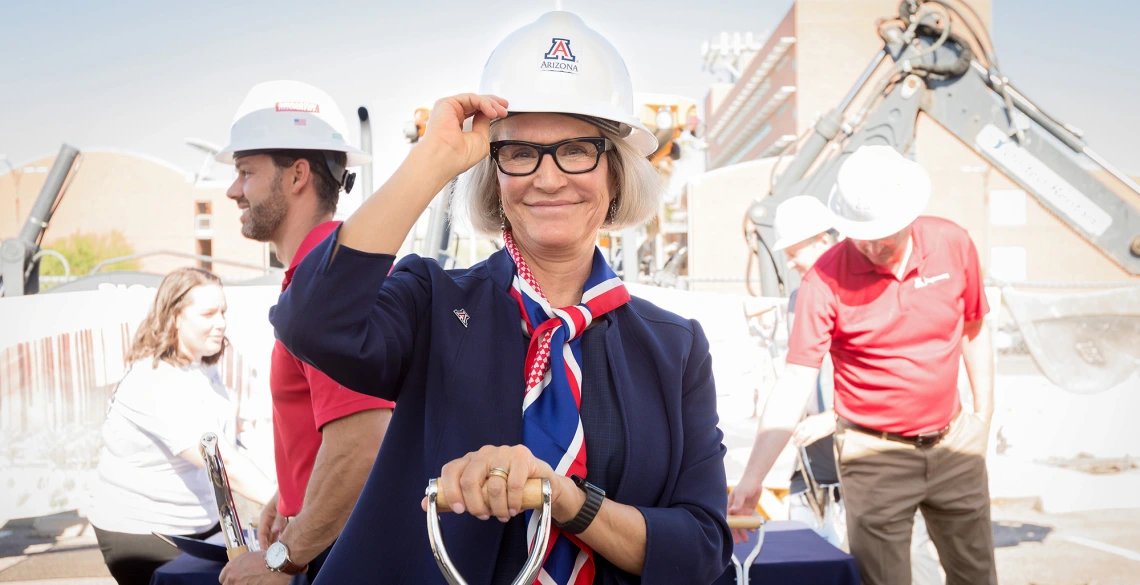Building for Research: A Conversation With Betsy Cantwell
The senior vice president for research and innovation, also a professor of aerospace and mechanical engineering, on the role the Applied Research Building plays in the university's research puzzle.

No description provided
Our job as scientists, in large part, is to develop, continuously revisit, and communicate a narrative around our research that allows nonexperts to not only envision the future, but to understand how we’ll get there. Strong narratives make our work accessible to those our research impacts and allow us to engage with fundamental, all-important questions about scientific research: “Is it valuable? Is it worth pursuing?”
The narrative of research at the University of Arizona happens to be built right into its name: The Office for Research, Innovation & Impact is called such because we believe in expanding the historic approach to research as a set of activities that impact real people. We lead with genuine curiosity by studying topics we’re passionate about, from the origins of our solar system to disease prevention to climate change. After we’ve uncovered new information, we innovate — for example, through commercialization of technology — and, lastly, we take our innovations out into the real world where they make an impact. As the state’s designated land grant university, the notion of “impact” is an ethos and a moral obligation to our community.
And with greater than $760 million in annual research and development expenditures, our researchers put this ethos into action every day.
This summer, we began construction on a new $85 million, three-story Applied Research Building to house research related to applied physical sciences and engineering. Scheduled for completion in January 2023, the building’s cutting-edge facilities will include a large area for assembling stratospheric balloons and nanosatellites as well as a chamber that simulates environmental conditions in space to test their performance.
Each of these actions was inspired and informed by future-casting — by continuously asking myself and our researchers, “Where are we going and how do we get there?”

